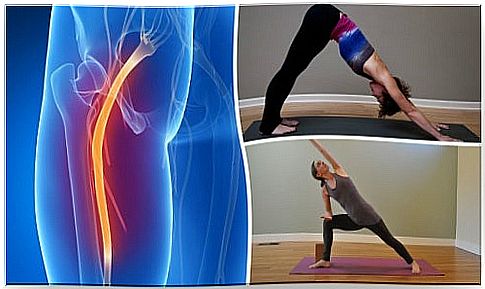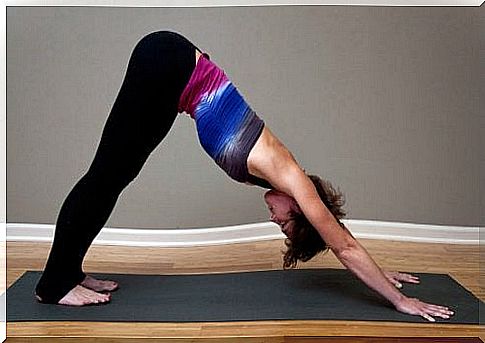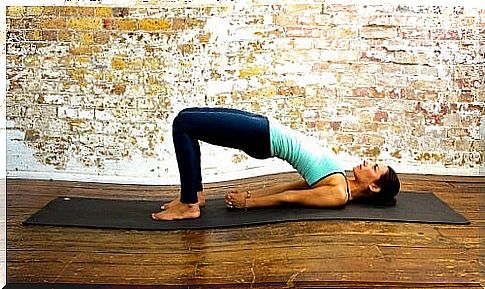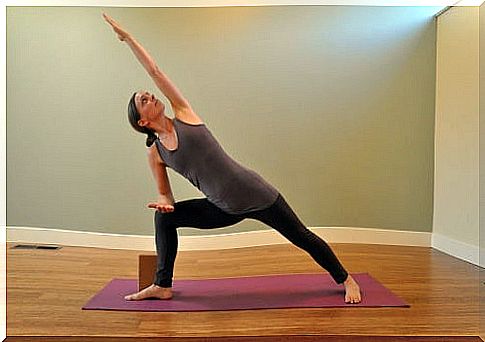With Yoga Against Sciatic Pain
There are exercises from the teaching of yoga that can help with pain caused by the sciatic nerve.

Our post today is about how to use yoga for sciatica pain .
Be careful, because not every yoga exercise is suitable for sciatica pain, but there are positions that can alleviate your discomfort and thereby reduce pain.
This particularly includes exercises that stretch the lower back muscles.
Yoga for pain?
There are many different schools of yoga . Not every one is suitable for beginners and not every one is allowed to be exercised when there is pain.
Traditional Indian yoga, for example, differs significantly from what is mostly taught as yoga in Europe.
The aim of the original yoga was actually to make the body flexible and flexible so that it can remain in the lotus position for as long as possible during meditation.
Today yoga is mostly used by us to gently strengthen and stretch the body and to achieve flexibility even in old age.
The exercises that relate to stretching are also recommended for those suffering from sciatic pain.

The sciatic nerve
The sciatic nerve is a very thick and at the same time the longest nerve in the human body. Among other things, it consists of nerve fibers from the spinal cord. The sciatic nerve extends from the lower back to the feet, where it originates at about the level of the hips.
From there it runs along the back of the thigh and over the hollows of the knees down to the feet. Depending on its location, the sciatic nerve can cause pain anywhere if it is pinched, irritated, or injured.
Sciatica pain is often caused by damage to the intervertebral disc and radiates from the back into the respective leg.
The most common causes of sciatica pain, however, are muscle tension and blockages in the vertebral bodies, as well as problems with the intervertebral disc such as a protruding disc.
In all of these cases, the sciatic nerve (sciatic nerve) becomes irritated or pinched and pain develops.
Exercises for prevention
Exercises that specifically build up the lower back muscles can help or prevent sciatica pain . However, appropriate exercises for the back should be done regularly to be effective.
Although that costs a lot of self-discipline, it is the best possible preventive concept.
Having the muscles firmly supporting the back helps prevent a sciatic nerve root from coming under pressure and causing pain in the first place.
Yoga for sciatica pain
Much of the pain is caused by cramped and tense muscles.
The exercises that help when the pain is already there should basically ensure that the affected muscles are not stressed, but relaxed and stretched.
So stay away from muscle-building gymnastics exercises and see if the following yoga-based exercises can help:

Yoga for sciatica pain
dog
This exercise is also suitable for beginners because it is not complicated.
Kneel on the floor and crouch with your buttocks on both of your heels. Then, put your toes up and open your knees hip-width below you.
Then lay your upper body on your thighs, stretching your arms forward as far as possible, as if you were lolling around.
Then spread your arms apart and lift your bottom as much as possible, but make sure that your back stays straight! Don’t forget to keep breathing normally!
Let the stretch work for at least 15 seconds before slowly lowering your buttocks again and repeating the exercise at least three times.

bridge
The yoga figure of the bridge is not for the inexperienced. However, you can use a variant of this if you want to alleviate your sciatica symptoms.
To do this, lie on your back and keep your arms stretched out next to your body. Then place your legs hip-width apart.
The feet should be on the floor with their feet flat. Then slowly lift your bottom, being careful not to hollow your back and keep breathing. Slowly raise and lower.

Lateral stretch
With the first two exercises you worked the lower back muscles, but you should also stretch the side back muscles. To do this, stand with your legs apart and then take a step to the side with one leg with your foot outward.
Bend your knee so that the angle between your thigh and lower leg is about 90 degrees and your thigh is level with the floor.
Now support yourself with your forearm on your thigh and bring your other arm sideways over your head. Now stretch slowly but steadily before switching sides.
Have you tried yoga for sciatica pain? Was it possible for you to alleviate your discomfort?









